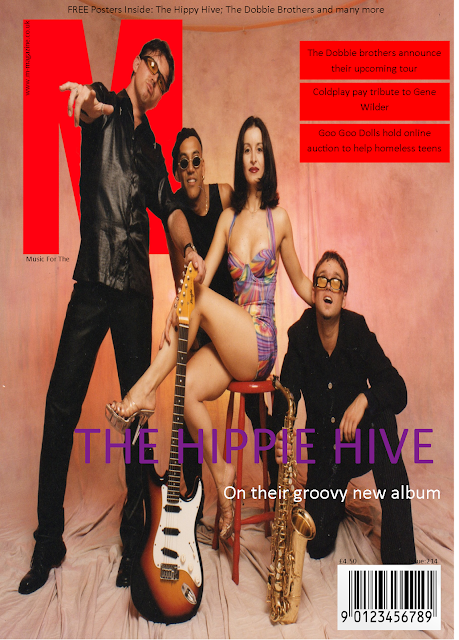To get an idea of my target audience for my magazine, I created a
questionnaire on SurveyMonkey.com. Here are my results:
Question 1 was “What is your age”. I asked this question to give me
an idea of my target age range. From my results I can see that my target
audience is 16-21 year olds. This information allows me to focus my attention
on this age range when creating my magazine.
Question 2 was “What is your gender?” I asked this to grasp what the
majority of my target audience’s gender was, allowing me to customize my
magazine to suit their needs. From my results I can see that the majority of my
target audience are female. Because of this I will have my magazine lean more
towards a feminine feel, however to not exclude the other 30% of my audience, I
will have to ensure my magazine isn’t too feminine.
Question 3 was “Do you listen to Alternative Rock?” from my
research I know that 80% of my audience do listen to alternative rock, so this
tells me that it is a good genre to make a magazine on.
Question 4 was “What colour scheme would you expect to see on an
Alternative-Rock magazine?” from my research I know that 60% of my audience
prefer the idea of a different colour scheme depending on the cover star.
Because of this, I will need to ensure that my mast head is able to change
colour to match the cover star. This will allow me to create symbiosis between
my audience and my magazine.
Question 5 was “Should the
magazine’s language be: Formal or informal?” 80 of my audience prefer informal
language for music magazines. Because of this, I will use informal language
when writing articles. However, I will also use formal language sometimes to
account for the other 20%
Question 6 was “How frequent should an Alternative Rock magazine be
published?” 60% of my audience suggested that a monthly magazine is best for my
music magazine.
Question 7 was “What content would you expect to find in an
alternative rock magazine?” from looking at the above results, I noticed that
interviews, news, events, band information, etc. were all popular answers from
my audience. Because of this, I will be sure to include these features.
Question 8 was “Should the magazine be advertised on social media?”
100% of my audience said yes to this question. This means that my magazine
should have social media links on it.
Question 9 was “Should an online version of the magazine be available?”
100% of my audience replied “Yes” meaning that an online version of the
magazine will be ideal; this will allow my magazine to not be made redundant in
the future if paper magazines go out of fashion.
Question 10 was “How much would you be willing to spend on a
magazine?” 9% said £3.50 - £5.00, 18% said under £2.50 and 73% said
£2.50-£3.50. This tells me that people are more willing to spend a mid-range
price for a magazine. This is the range that I will price my magazine.
































